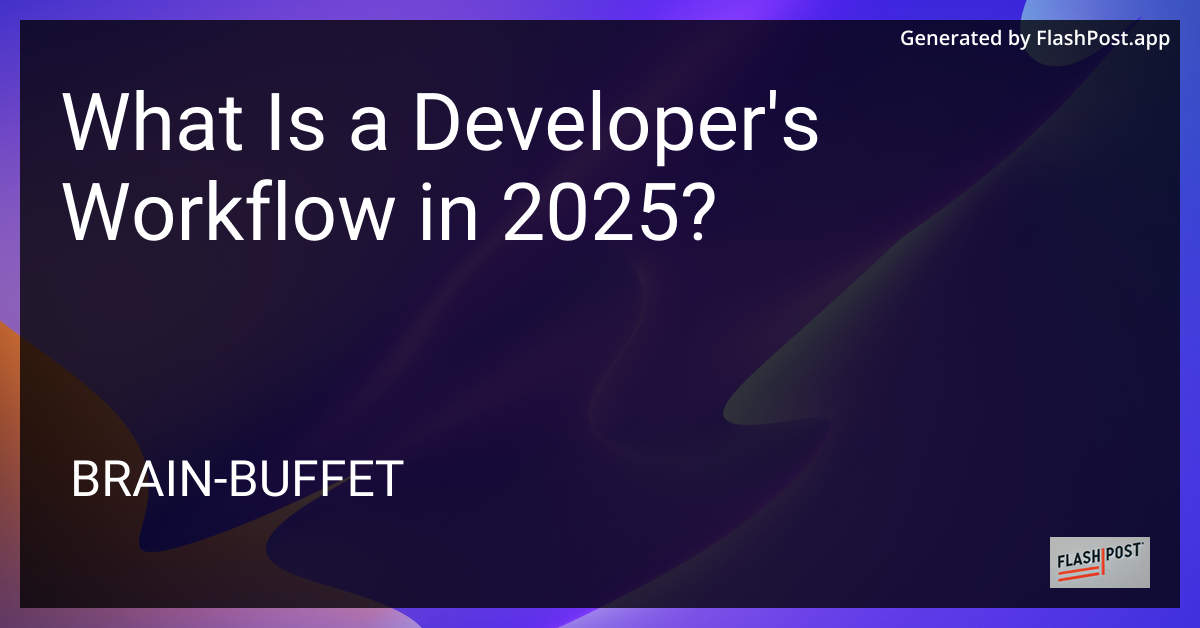What Is a Developer's Workflow in 2025?

In the realm of web development and beyond, the role of a software developer is continually evolving. As we look ahead to the year 2025, let's explore what a developer's workflow might look like in this futuristic landscape. Emphasizing cutting-edge technologies, collaboration, and efficiency, the workflow of 2025 promises to be more dynamic and streamlined than ever before.
Embracing Automation and AI
By 2025, automation will play a pivotal role in a developer's daily routine. Tools powered by Artificial Intelligence (AI) will handle repetitive tasks such as code testing, debugging, and even some aspects of code generation. Imagine AI-driven systems capable of conducting full-fledged rust web development reviews, leaving developers free to focus on innovation and design.
Cloud-Native Development
Gone are the days of worrying about local development environments. In 2025, developers will predominantly work in cloud-native environments, facilitated by robust platforms that offer seamless integration with various services. Cloud development will not only enhance collaboration but also ensure that projects are inherently scalable and deployable across global infrastructures.
Integrated Development Environments on Steroids
Integrated Development Environments (IDEs) will continue to evolve, offering predictive coding assistance and real-time collaboration features. These advanced IDEs will facilitate pair programming by allowing multiple developers to work on the same codebase simultaneously, sharing insights instantaneously across the cloud.
DevOps Optimization
The DevOps culture, which combines software development (Dev) and IT operations (Ops), will reach new heights by 2025. The integration of Machine Learning algorithms will predictably enhance CI/CD (Continuous Integration/Continuous Deployment) pipelines, thus optimizing deployment workflows. These advancements will not only reduce the time to market but also enhance product reliability.
Focus on Security and Privacy
In 2025, developers will need to prioritize security more than ever before. Advanced security tools will be seamlessly integrated into the development process, providing real-time alerts and suggestions to mitigate vulnerabilities. Additionally, the importance of privacy will lead to the adoption of practices such as end-to-end encryption by default.
Cross-Platform Development Cultivation
With the diversification of devices, ranging from augmented reality glasses to advanced IoT devices, developers will need to embrace cross-platform development technologies. This shift will ensure applications are accessible and functional across a myriad of devices without compromising on quality or performance. Technologies such as Flutter, React Native, and others will become the mainstay in this arena.
The Evolving Role of Low-Code/No-Code
Low-code and no-code platforms will complement classical development practices, enabling non-developers to contribute to the development process. These platforms will harness the potential of automation and AI, reducing the complexity of creating applications while fostering greater creativity and inclusivity.
Continuous Learning and Adaptation
Finally, developers in 2025 will be lifelong learners, adept at staying ahead of the curve with emerging technologies. The fluid nature of web development trends will require developers to adapt, ensuring they leverage the latest tools and practices to maintain their competitive edge.
In summary, the developer's workflow in 2025 will be characterized by a heavy reliance on automation, AI, and cloud technologies, coupled with a staunch focus on security and scalability. As we move closer to this exciting future, embracing these trends and innovations will be critical for developers aiming to thrive in an ever-evolving digital landscape.